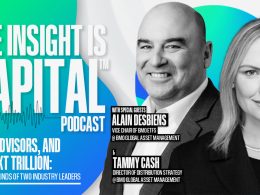by Dirk Hofschire, CFA SVP; Jake Weinstein, CFA Research Analyst, Asset Allocation Research; Lisa Emsbo-Mattingly, CBE Director, Asset Allocation Research; Jenna Christensen Research Associate, Asset Allocation Research; Cait Dourney, CFA, Research Analyst, Asset Allocation Research
Key takeaways
- Most global economies enter 2021 in early-cycle recoveries, with a prospective economic reopening likely to lead to a broadening expansion as the year unfolds.
- The winter rise in virus cases represents a strong near-term headwind but is unlikely to cause a double-dip recession.
- Global monetary policy remains highly accommodative and supportive of asset prices, but the fiscal policy outlook is more uncertain.
- Amid positive vaccine news, investors’ expectations for a full economic reopening have underpinned a reflation trade driving Treasury yields and stock prices higher.
- With higher asset valuations already reflecting positive expectations for reopening, financial markets may be influenced heavily by the trajectory of policy, inflation, and real interest rates; therefore, some volatility is likely.
Macroeconomic backdrop: Constructive cycle progression despite winter doldrums
The global business cycle will begin 2021 in recovery mode.
- Most major economies exited brief but sharp recessions during the third quarter and have generally made improvements since the first half of 2020.
- China’s progression is ahead of most other economies, in part because of its quicker emergence from lockdowns and the rapid recovery in global manufacturing, as shown in the illustration, Most global economies remain in the early-cycle recovery phase.
- The US is in an early-cycle recovery phase, progressing toward a mid-cycle expansion.
- Although activity remains below 2019 levels in most major economies, the prospect of a vaccine-related full reopening over the next year makes us constructive on the continued broadening of the economic expansion in 2021.
The winter virus resurgence presents a near-term headwind for economic improvement, but not one that we expect will generate a double-dip recession.
- Recent European restrictions were less stringent and therefore less harmful to economic activity than those implemented in the spring. Some countries moved to loosen their restrictions, and the global industrial upswing continues to benefit European manufacturing and exports.
- We expect new US restrictions to be on the lighter end of the range of those taken in Europe and the overall economic impact to represent a stalling rather than a severe reversal of economic momentum in the very near term. Service activity has slowed amid the recent surge in virus cases, but manufacturing activity remains strong. See the chart Recovery in manufacturing; service industry hit with new wave of virus cases.
- The US consumer is better poised to weather this near-term economic lull due to the approximate $1 trillion of additional savings built up over the past several months. See the chart, In aggregate, US consumers were able to save money in 2020.
- Although the savings is unequally distributed across US households, the aggregate savings cushion is the result of reduced spending and massive government transfers during the first half of the year. Personal savings rates averaged 20% from April through October—nearly 3 times as high as the rate at the end of 2019.
In aggregate, US consumers have been able to save money in 2020
Additional personal savings breakdown
Policy environment: Supportive monetary, uncertain fiscal
Global monetary policy remains extremely accommodative, with the Federal Reserve and other central banks anchoring short-term interest rates around zero and expanding their balance sheets through quantitative easing (QE) and other extraordinary programs. See the chart, Monetary policy from central banks around the world remains extremely accommodative.
- The QE tailwind is less forceful than it was at the beginning of the pandemic outbreak in the spring, but it remains a supportive liquidity backdrop for asset markets.
- Near record-low Treasury yields also support higher asset valuations, as all other types of assets look attractive by comparison.
Fiscal-policy uncertainty contributes to the cloudy inflation outlook for 2021.
- The US Congress approved a roughly $900 billion stimulus package in late December that will help offset some of the near-term, virus-related economic weakness.
- However, a growing budget crunch at the state and local level implies the possibility of a fiscal drag on the economy in 2021.
- The Georgia Senate runoffs in early January determined which party will control the Senate in 2021, which will shape fiscal policy for the remainder of the year.
- The Democrat-controlled Senate may move to legislate larger fiscal deficits and higher-multiplier government spending. This scenario could generate greater inflation risk on a 12- to 18-month basis if a renewed fiscal push accompanies a widespread reopening of the economy.
Reflation driven by reopening expectations: Expect some volatility too
Positive vaccine developments and expectations for a full economic reopening in 2021 generated a “reflation” trade in financial markets during the final months of 2020. A reflation trade is marked by upward pressure on Treasury bond yields amid rising expectations for an acceleration in nominal growth.
After a period of weak growth amid falling real (inflation-adjusted) rates though the first two-thirds of 2020, real rates bottomed on September 1 and rose modestly from extremely low, negative levels. See the chart, Real yields rose modestly since September, as investors anticipated a rise in inflation. Since then, real yields have trended lower since mid-November but ended the year higher than their August trough.
- This reflation dynamic created a reversal in the leadership patterns of asset performance, with categories such as small cap and value stocks spearheading stock-market gains. Non-US equities, particularly emerging-market stocks, outperformed amid hopes for a global acceleration. See the chart, Performance leadership and reflation: Small caps and emerging-market stocks outperforming since September.
- This generally reflationary backdrop seems likely to persist as the world moves toward a fuller reopening and the post-pandemic phase.
As the reopening becomes reality, financial-market patterns may be influenced heavily by the trajectory of policy, inflation, and real interest rates.
- The broadening of the economic expansion toward mid-cycle appears likely as 2021 moves along, and this phase has historically provided a relatively positive setting for asset returns.
- Significant positive news has already been priced into asset markets, with riskier asset prices now trading at the upper end of their historical norms. See the chart, With Treasury yields near all-time lows, riskier assets appear to have priced in good news, trading near the top of their historical ranges.
- Upon reopening, supply constraints and pent-up demand may continue to drive inflation expectations higher. More accommodative fiscal and monetary policies could sustain the inflation pressures, which could push bond yields higher and potentially threaten valuations of riskier assets.
- Alternatively, if policymakers dial back the monetary and fiscal response, a more moderate growth backdrop may raise the risk of a growth disappointment relative to market expectations.
- Given this broad range of outcomes, we expect more modest asset returns in 2021 and the potential for volatility to remain elevated amid shifting expectations.
Readjustment: Beyond 2021
As businesses, consumers, and policymakers adjust to the post-pandemic landscape, financial markets are likely to readjust their own expectations.
- Policymakers appear likely to continue to favor significant support for the financial markets and economy, but improving conditions will undoubtedly bring the magnitude of their commitment into question over time.
- Our focus will be on the potential for a sustained rise in inflationary expectations to disrupt the low-rate environment that underpins above-average asset valuations. We believe inflation-resistant assets such as Treasury Inflation-Protected Securities (TIPS) and commodities offer important diversification against this inflation risk.
- Non-US assets (offering exposure to foreign currencies) appear less expensive than US investments and offer important diversifying exposures at a time when hard-hit developing economies may benefit the most from widespread vaccinations and a global reopening.
- While the mid-cycle phase has historically been positive for risky assets, it has also tended to experience more frequent equity corrections. Volatility may remain elevated.
- Overall, the 2021 reopening is likely to generate additional and unforeseeable surprises, implying portfolio diversification across a broad array of assets will prove as important as ever.
Copyright © Fidelity Investments













